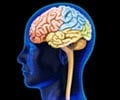Two brain regions track the distance to our destination when we navigate from point A to point B, reveals a new research funded by the Wellcome Trust.

Dr Hugo Spiers and his team at UCL used film footage to recreate the busy streets of Soho in London (UK) inside an MRI scanner. Study participants were asked to navigate through the district, famous for its winding roads and complex junctions, whilst their brain activity was monitored. The researchers analysed brain activity during the different stages of the journey: setting course for the destination, keeping track of the destination while travelling, and decision making at street junctions.
The team found that activity in the entorhinal cortex, a region essential for navigation and memory, was sensitive to the straight-line distance to the destination when first working out how to get there. By contrast, during the rest of the journey, the posterior hippocampus, also famous for its role in navigation and memory, became active when keeping track of the path needed to reach the destination.
The results also reveal what happens in our brain when we use a Sat Nav or GPS to get to a destination. By recording brain activity when participants used Sat Nav-like instructions to reach their goal, the researchers found that neither of the brain regions tracked the distance to the destination and in general the brain was much less active.
Dr Spiers said: "Our team developed a new strategy for testing navigation and found that the way our brain directs our navigation is more complex than we imagined, calculating two types of distance in separate areas of the brain." He also commented on how the results might explain why London taxi drivers famously end up with an enlarged posterior hippocampus: "Our results indicate that it is the daily demand on processing paths in their posterior hippocampus that leads to the impressive expansion in their grey matter".
"These findings help us understand the mechanisms by which the hippocampus and entorhinal cortex guide navigation. The research is also a substantial step towards understanding how we use our brain in real world environments, of which we currently know very little."
Advertisement
Source-Eurekalert













